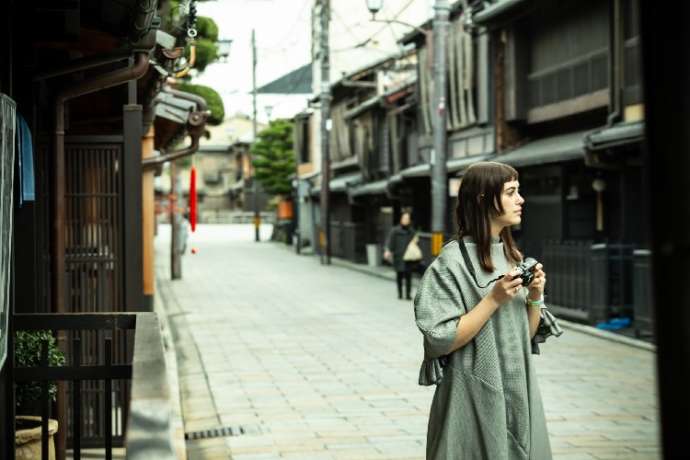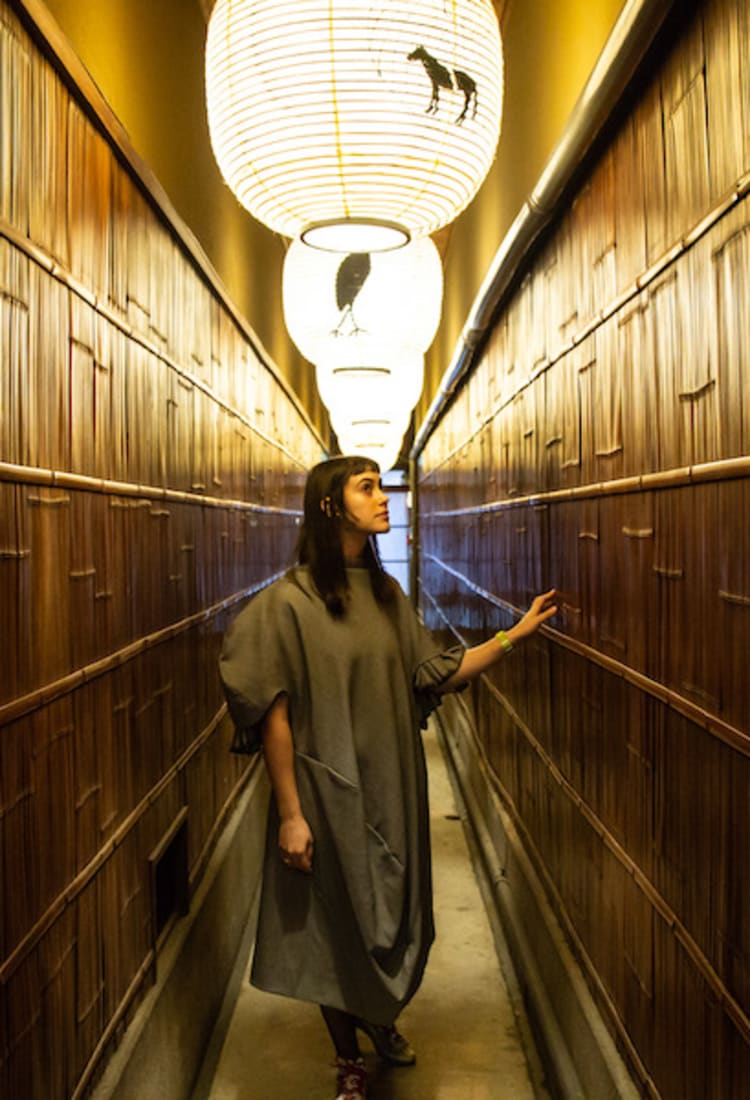
Visiting Kyoto’s Art Destinations with New York Based Art Director Leta Sobierajski – Part 2
Visiting Kyoto’s Art Destinations with New York Based Art Director Leta Sobierajski – Part 2
5. Kyoto Seishu Netsuke Art Museum
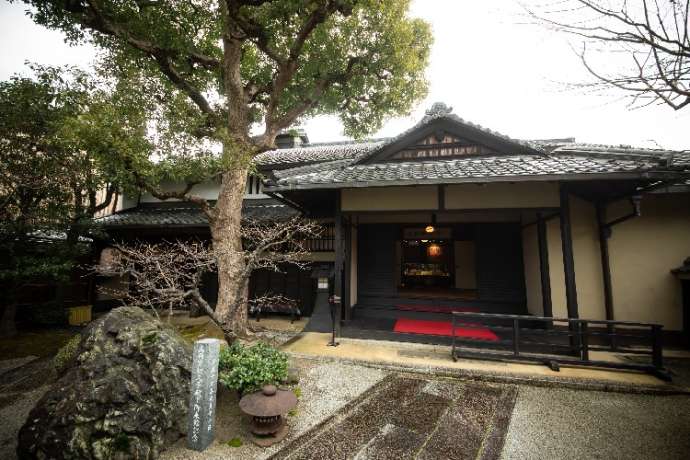
The second day of our stay in Kyoto begins with a 20-minute bus ride from Kyoto Station to the Kyoto Seishu Netsuke Art Museum, just across from Mibu Dera Temple. This is the only netsuke specialty museum in Japan. What are netsuke anyway you ask?
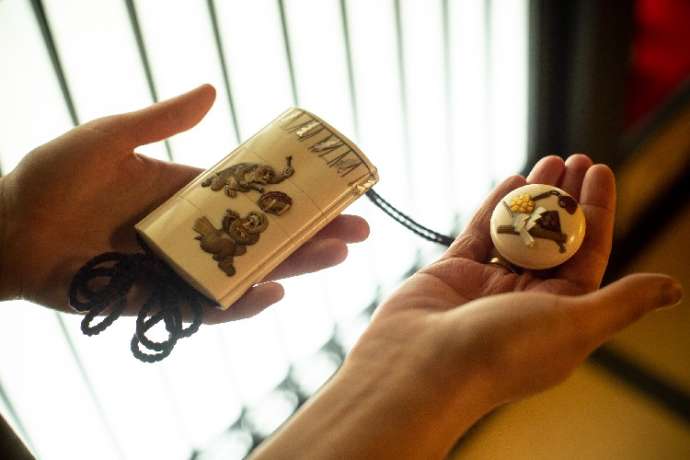
Netsuke are small engraved sculptures about the size of your palm. Until the second half of the Edo era (1800’s) when kimono were everyday clothing for Japanese, netsuke were used to fasten tobacco, medicine, personal seals, and other containers to one’s waist. Originally used from the 1600’s for strictly functional purposes, the aesthetics of netsuke became more important with time, and by the latter half of the Edo era they had become enormously popular. During this time, they began to make fine engravings and designs on them and netsuke became collectable art pieces.

Netsuke were made from a variety of materials, like ivory, metal, deer horn, pearls, and others. “It is said that most things made in the Edo era (1603-1868) were exported abroad, and only about 10% to 20% remain in Japan. In order to make netsuke appealing to newer generations and to pass on the culture, this museum’s collection consists primarily of works made from contemporary artists,” says curator Atsushi Date.

“I had no idea there even was something like this!” Leta says in surprise. Naturally this is the first time she’s seen netsuke.
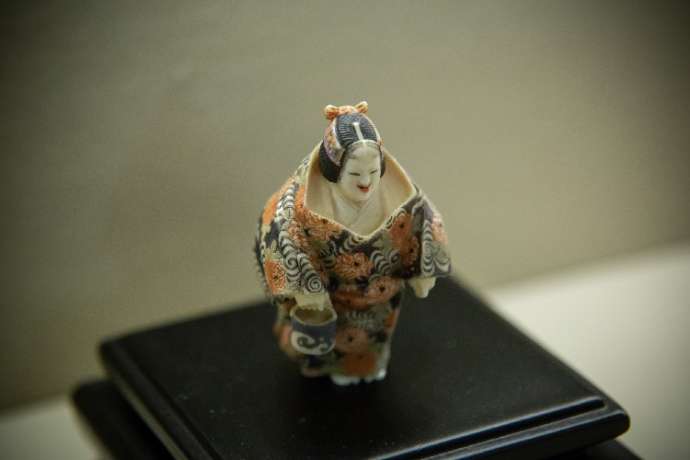
Netsuke have a variety of designs, such as those that express the rich emotions of humans, or those depicting food and other daily necessities.

Out of the all the netsuke, Leta liked the “wrapping paper” netuske most. Leta: “Even though it’s made of ivory, it actually looks like its wrapping paper.”

Yoko Mukuda “Wrapping Paper” Material: Ivory
The collection here consists primarily of works from contemporary artists, but there are also older pieces from the Edo era. The passing of time has given them a distinct charm not found in newer items.

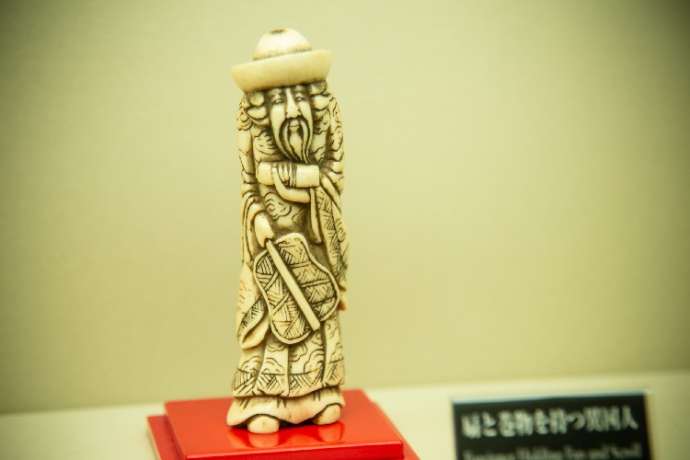
The Kyoto Seishu Netsuke Art Museum’s netsuke collection consists of about 5,000 pieces and continues to grows every year. In the exhibition room, they had around 400 of these netsuke on display.

The netsuke are displayed prominently on pedestals so visitors can better appreciate the beauty of each piece. Because the exquisite details of the netsuke is possibly their greatest feature, magnifying glasses are provided so that visitors can see the netsuke in all of their beauty.
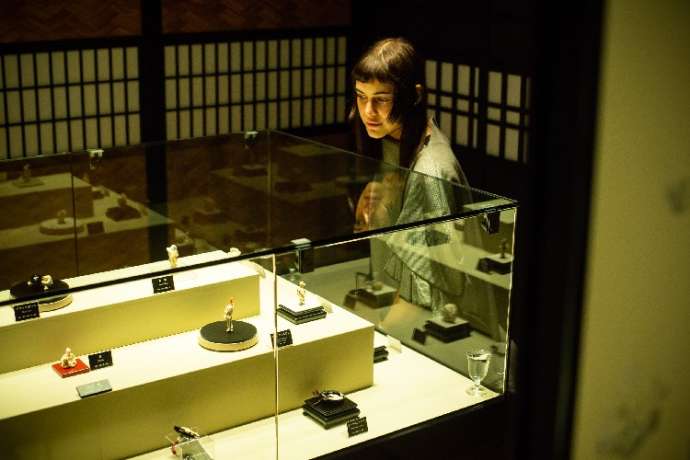
Also worth noting is the building itself. Built in 1820, it is the only samurai residence that remains in Kyoto, and is one of Kyoto’s Registered Tangible Cultural Properties. There are no columns in the corridor connecting the team room to the tatami room, allowing for a beautiful panorama view of the garden landscape.
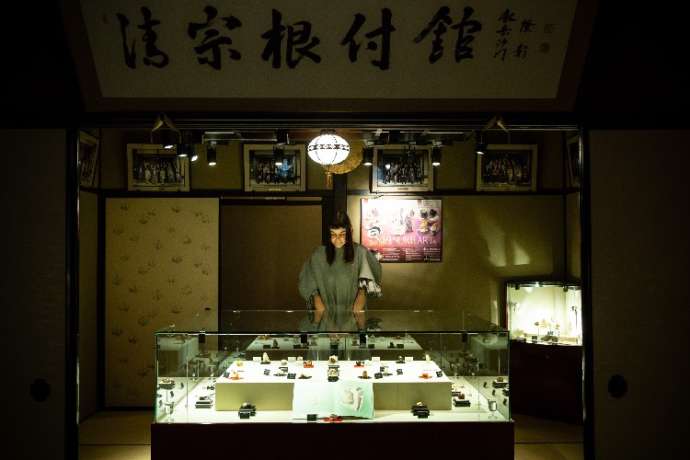
With a traditional kitchen, called an okudosan, a well, and other remnants of times past, visitors get a rare glimpse of what life was like here long ago.
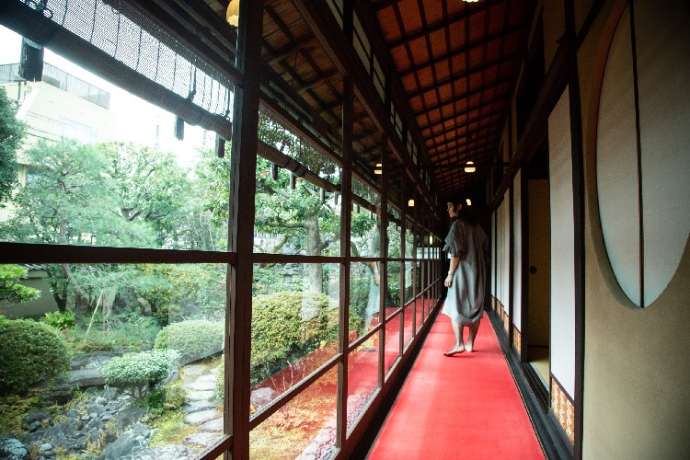
“They were originally just everyday items, but their craftsmanship was so good they entered into the realm of art and became a culture in their own right. I feel they have the power to fascinate people and turn them into collectors.” It appears Leta herself has also been drawn in by the wonder of elaborately crafted miniatures.


|
Kyoto Seishu Netsuke Art Museum |
|
Address: 46-1 MibukayōgoshochōNakagyō-ku, Kyōto-shi Hours: 10:00-17:00 Regular Holiday: Monday Phone Number: 075-802-7000 |
6. VOU

Widely popular with the younger crowd, our next stop is a champion of the Kyoto movement, shop and gallery VOU. It is located in a back alley right near Karasuma Station (The shop will be at this location until March 2019, and will move to a new location in summer 2019.)

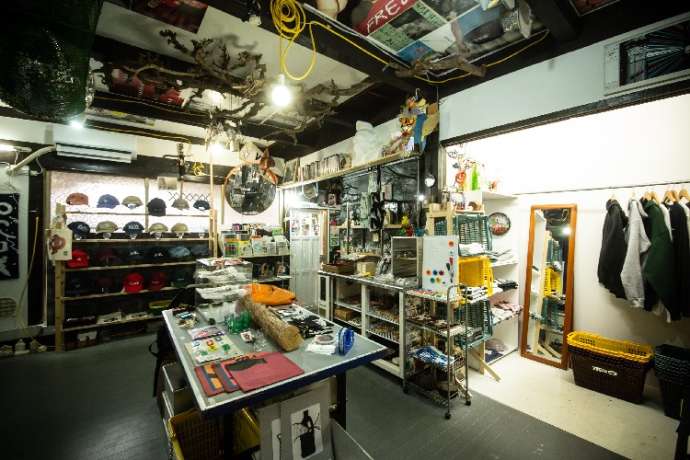
The shop is filled with various things, including clothes, books, dishware, toys, art works, and others.
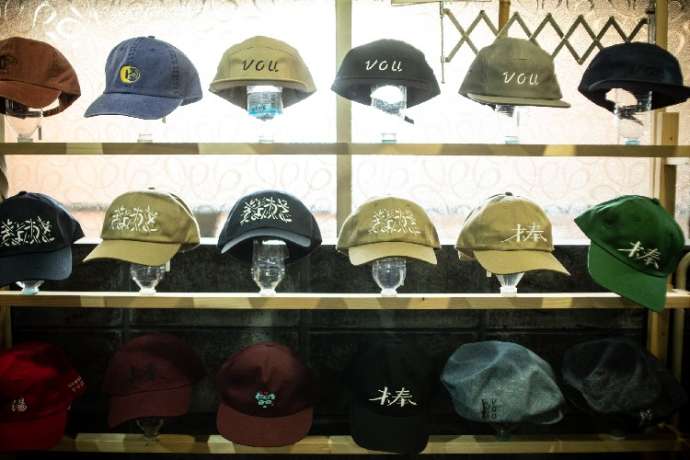
VOU is a boutique shop run by shop owner Kenta Kawara. Kawara works with and collaborates with artists and creators, many of whom are his friends, to continually make new and original products. Caps with 棒 (read bou, Japanese for stick, deliberately misspelled as VOU) and きょうと (Kyoto) stitched into them were created alongside Kyoto-based graphic designer, Ryu Mieno. Born in 1987, shop owner Kenta Kawara is in the same generation of artists as Leta, who was born in 1986.
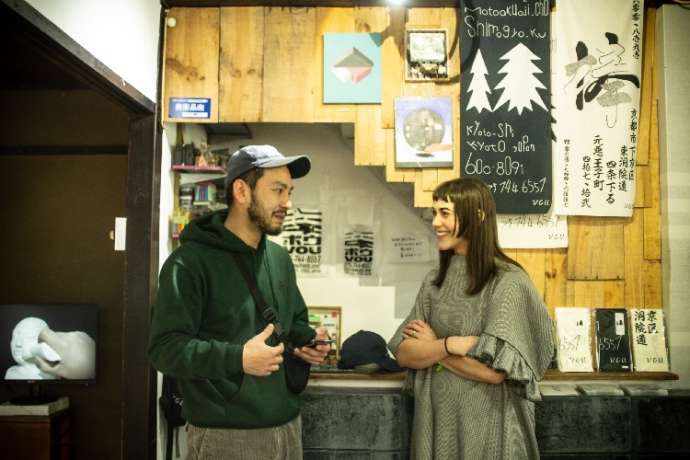
“The artists I collaborate with to create products — I don’t just work with them because their design is good, it’s not simply a business relationship like that. I develop and create things with them because they are the kind of artists I want to have long-term relationships with,” says Kawara.
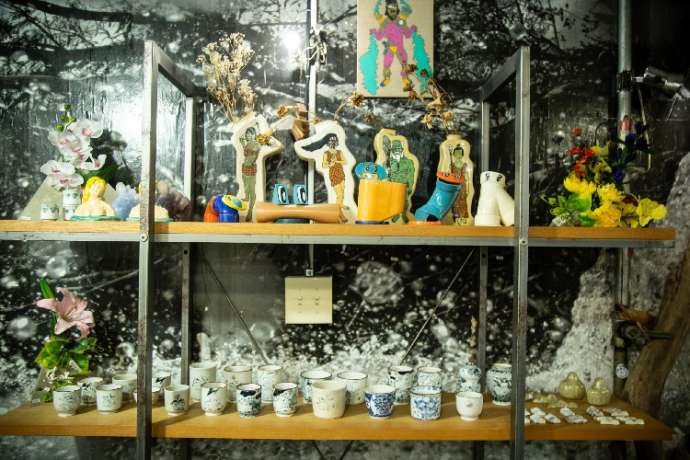
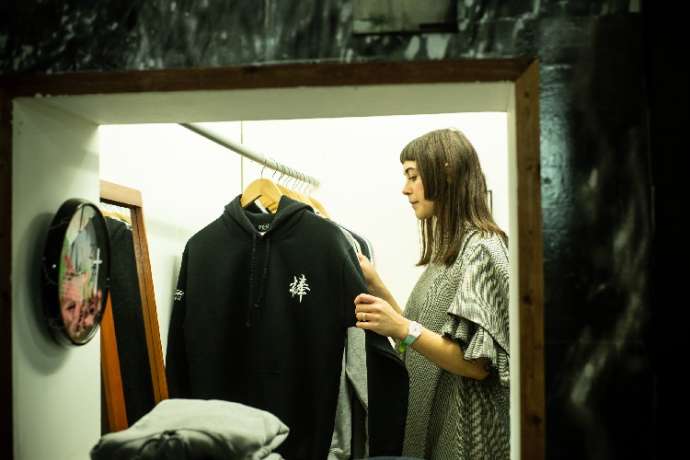
From limited edition items made by artists, to logo hoodies, it’s a lineup unique to VOU.
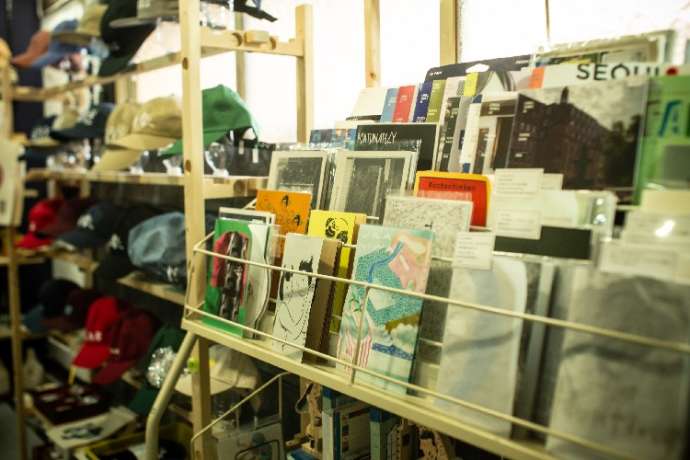
They also have a collection of zines from around the world…

…as well as an adjoining gallery space.
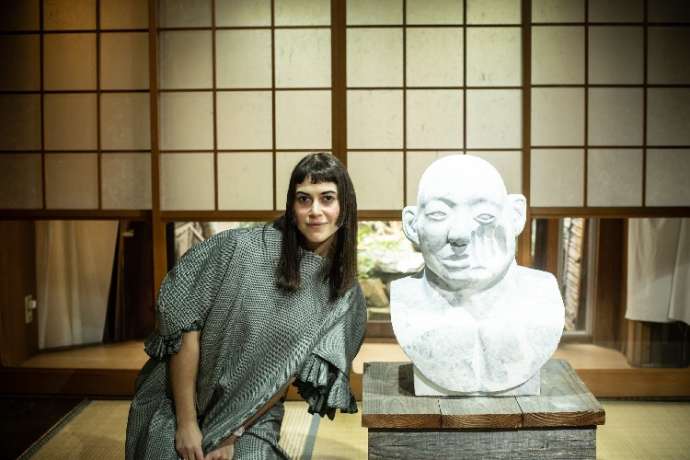
Leta bought a work by Kyoto-based artist Shiori Oe. “I love the uneven texture” she said.
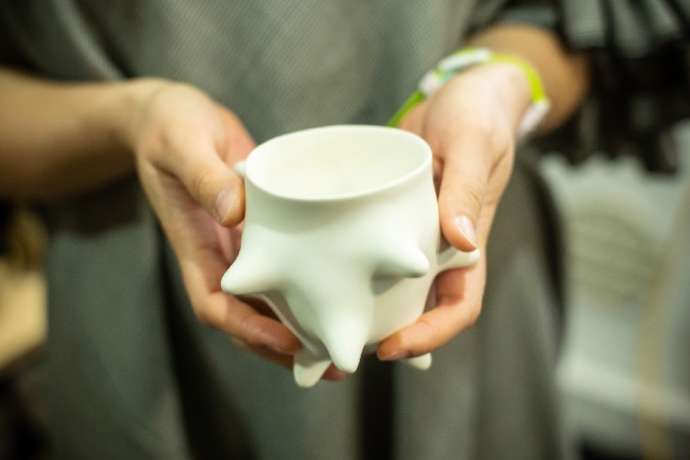

“It’s interesting there are so many rebellious works in here. Kawara-san and I are both right at that time of our lives where we are done learning and are ready to express ourselves to society in our own way. That kind of unbridled expression from our generation can really be felt in the work here,” says Leta.
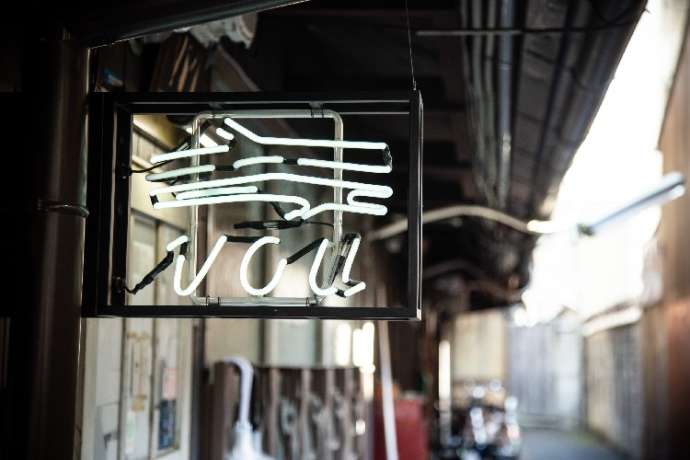

By the way, VOU will close the store at their current location at the end of March, 2019, with plans to relocate to a new store sometime in the summer of 2019. After the relocation, they will have an entire building and lot more space. They plan to have a contemporary art gallery on the first floor, a shop on the second, and an event space on the third. We can expect to see a lot more of VOU in the future.
|
VOU |
|
Address: 47-12 Oji-cho, Genaku, Shijo-sagaru, Higashinotoin-dori, Shimogyo-ku, Kyoto-shi Hours: 15:00-21:00 Regular Holiday: Wed, Thu Phone Number: 075-744-6557 URL: https://www.instagram.com/voukyoto Notice: VOU will close its current shop at the end of March and reopen in a new location in the summer of 2019. |
7. SOWAKA
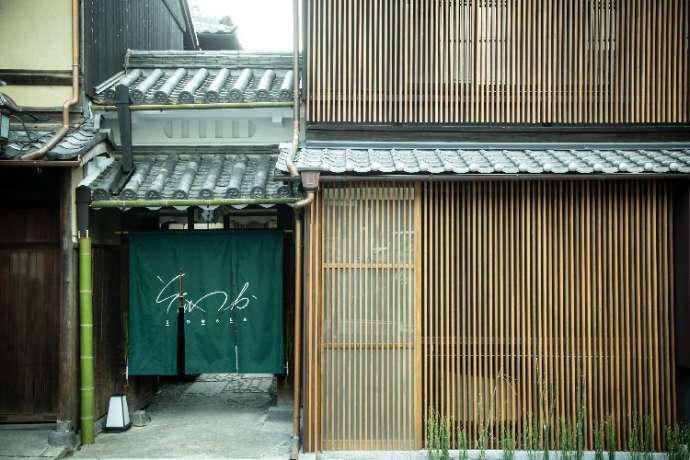
Our next stop is just a 3-minute walk from Yasaka Shrine in the Gion area. Hotel SOWAKA held its grand opening on March 1, 2019. Now renovated into a luxury hotel, the over 100-year-old building was originally a tea ceremony arbour. We had the privilege to check out the inside.
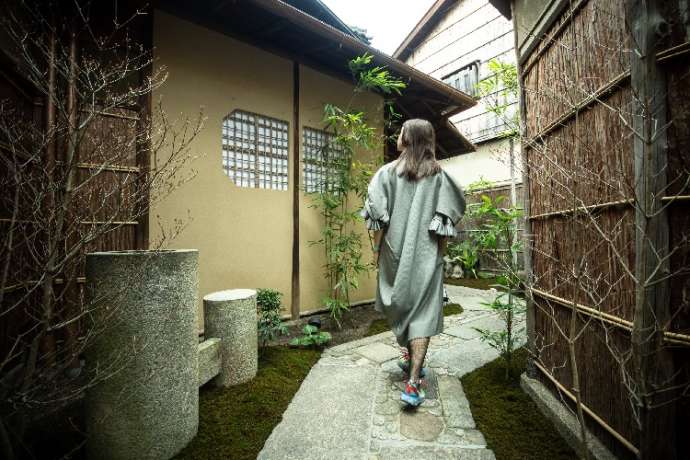
From the cobblestoned entry, there is an air of Japanese refinement.

As soon as visitors take off their shoes and enter the hotel, they are met with a spacious, modern lobby. To overcome the cramped feeling characteristic of many old Japanese houses, they have made ingenious use of natural light and other design methods. Next let’s head to the guest rooms.

Room 108 has a beautiful view of the Japanese garden right from the bed.
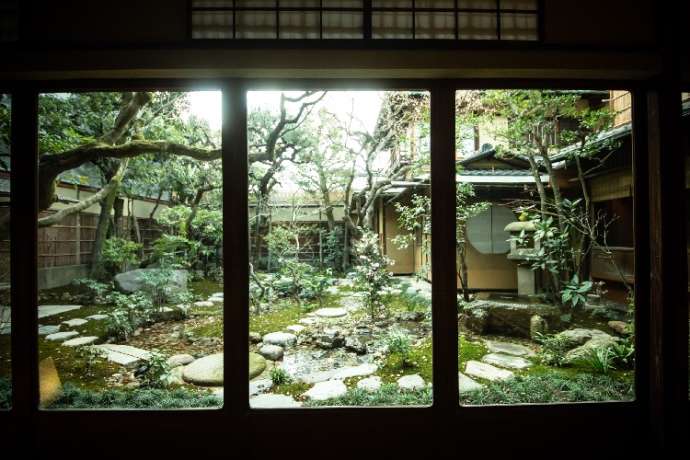
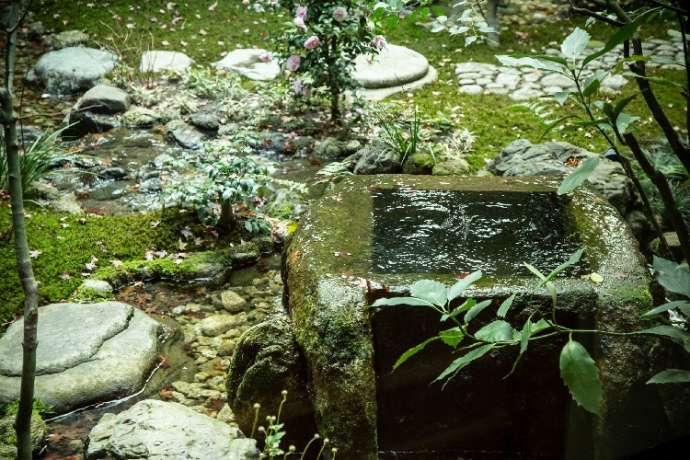
The endlessly flowing water and the seasonally changing faces of the Japanese garden are enthralling.

This corridor inside is lined with bamboo and is comfortable both for sitting and walking on. “It’s really interesting to see the contrast between the new bamboo used inside and the old bamboo the building was made with,” says Leta.
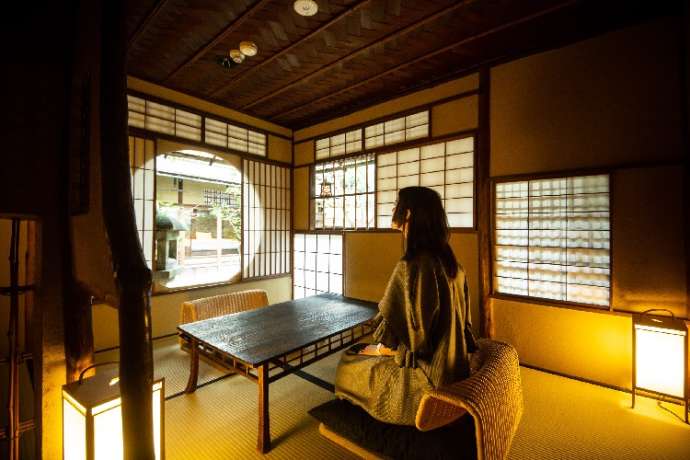
We also visited room 104, which is a maisonette type room complete with a tea room and bedroom on the first floor, and a cyprus bath on the second floor. The garden can be seen from team room, and is the perfect place to cool off and relax on the tatami mats after a hot bath.

In addition, there was a guest room with various levels, including a living room, and a washbasin. The design of the hotel makes the best of the layout of the original rooms, giving each room its own distinct shape and feel.
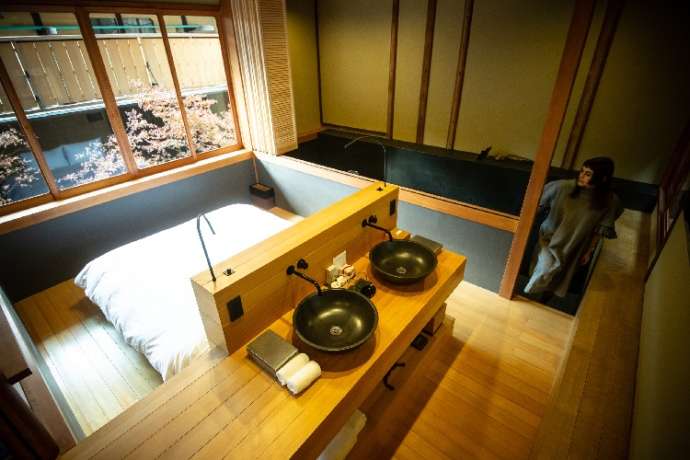
The Japanese sliding screen doors have beautiful traditionally printed paper adorned with an original pattern. The paper was made especially for this hotel by Noda Print Motif Workshop in Shiga Prefecture.
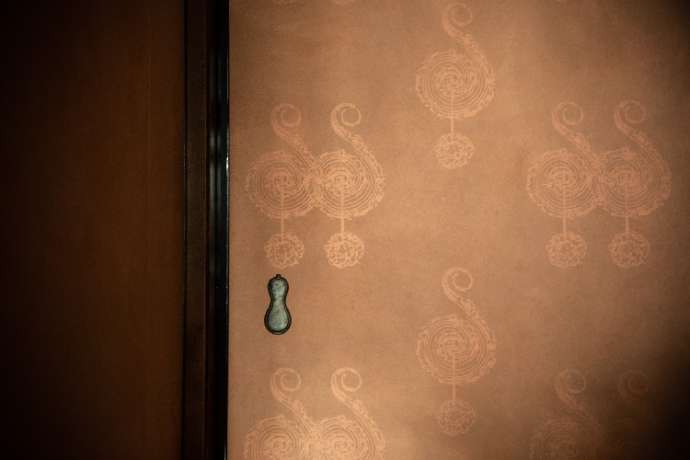
From the beautifully crafted Japanese style transom (a beam between the ceiling and the door designed to let air and light pass through) above the door, to many of the other details that can be seen throughout the hotel, it’s clear how much artisan craftsmanship went into this space.
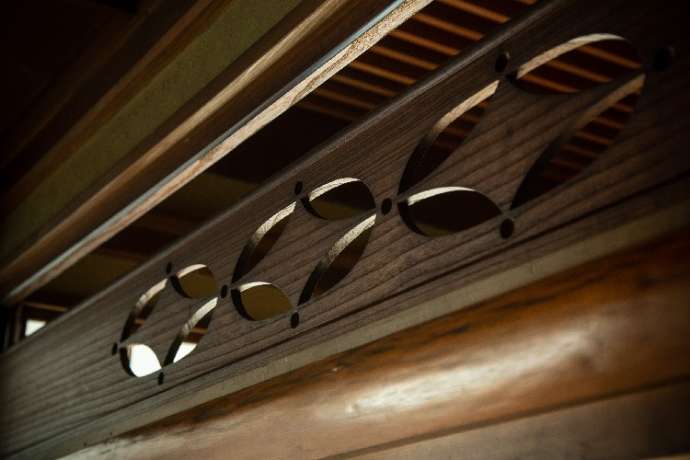


“Tradition and innovation. SOWAKA embodies this in a truly gorgeous and luxurious way. So much so that I would totally live here!” says Leta, entranced by its beauty. This hotel is absolutely perfect for people who like architecture and design.
|
SOWAKA |
|
Address: 480 Kiyoi-cho,Yasaka, Toriimae-sagaru, Shimogawara-dori, Higashiyama-ku, Kyoto Phone Number: 075-541-5323 |
8. PASS THE BATON KYOTO GION
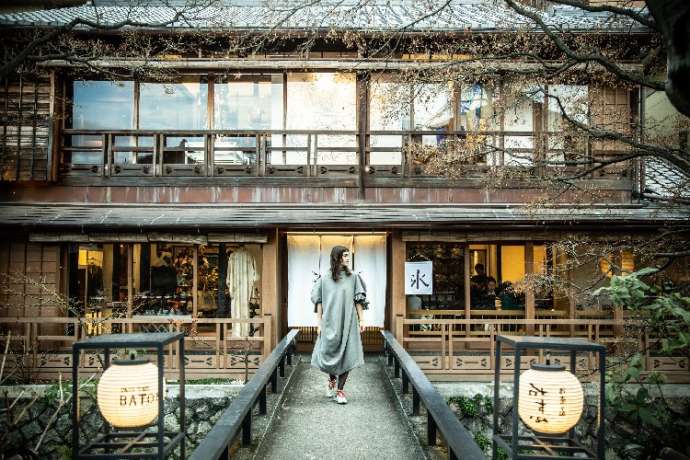
Our short two-day trip is nearing its end. The last place we visit is Pass The Baton Kyoto, also located in Gion. Often sighted in movies and magazines, the well-known stone paved roads of Gion are home to Pass the Baton. “Take care of what you already have, and give it new value” is the motto of this curated second-hand shop.
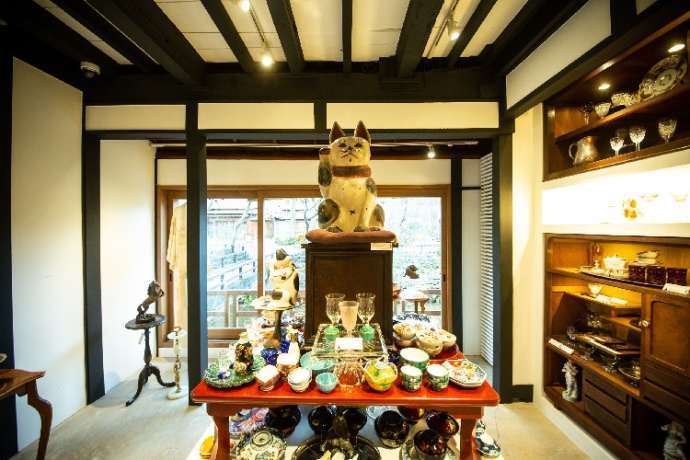
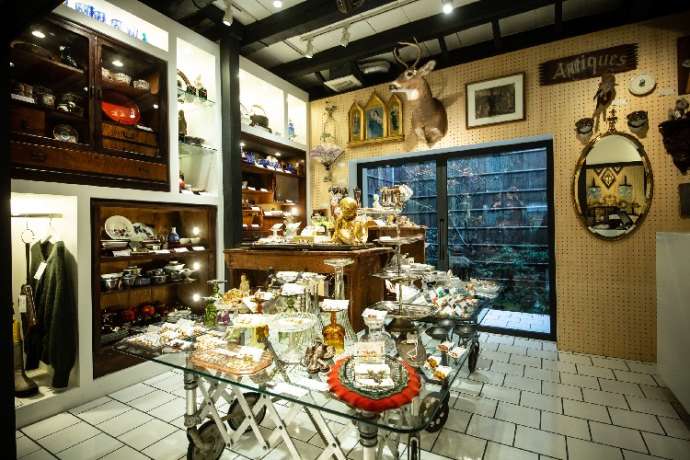
“New recycling”, the concept of Pass the Baton Kyoto Gion, means taking things that, although well looked-after, no longer have any use to their previous owners, and connecting them to their next owner in meaningful ways. On the tags of each item is a photograph and short bio of its previous owner, giving them each their own story.
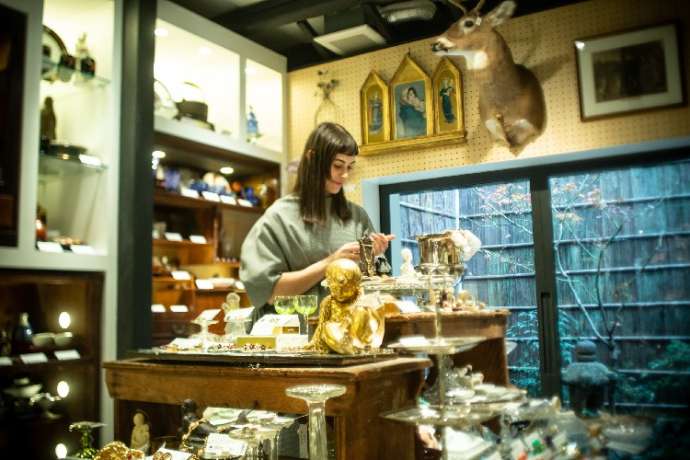
Leta: It’s a great idea that you can feel the love the previous owners had for each of these items, and take it home with you.


Hand-crafted bowls and plates, from a time before mass production, as well as other partially damaged items which have been repaired with gold using a technique called kintsugi, are also for sale. A ceramic fox was among the day’s discoveries.

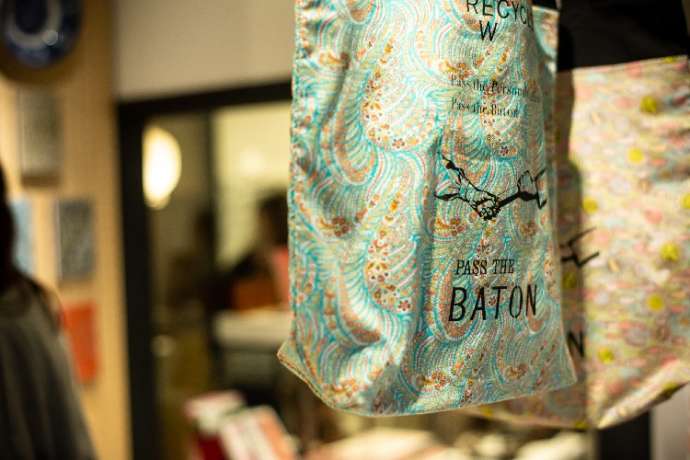
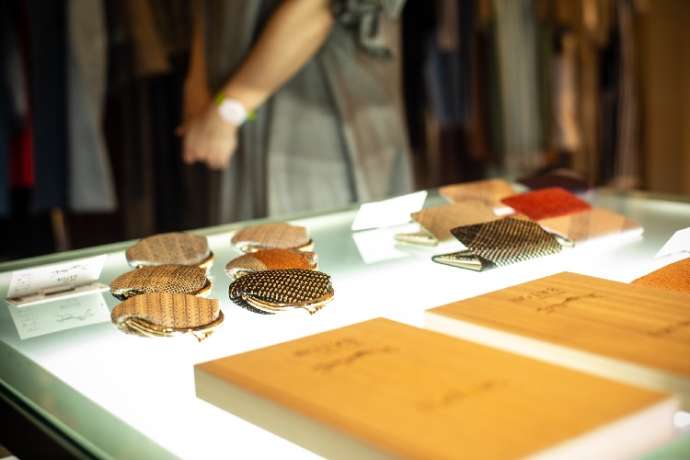
Sewing logos onto B-grade or dead stock handbags and cleverly using things like offcuts of wood are features of some of the items on display.

The paper lanterns adorning the atrium and the Japanese aesthetic of the shop are thanks to interior designer Masamichi Katayama (Wonderwall), and are popular with both locals and foreigners alike. Again, here you can see how traditional Kyoto has been updated for modern times.

The second floor is a tatami room which requires guests to remove their shoes.
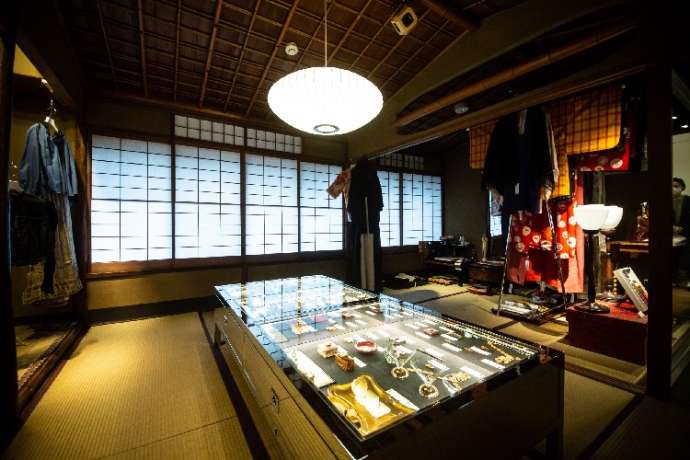
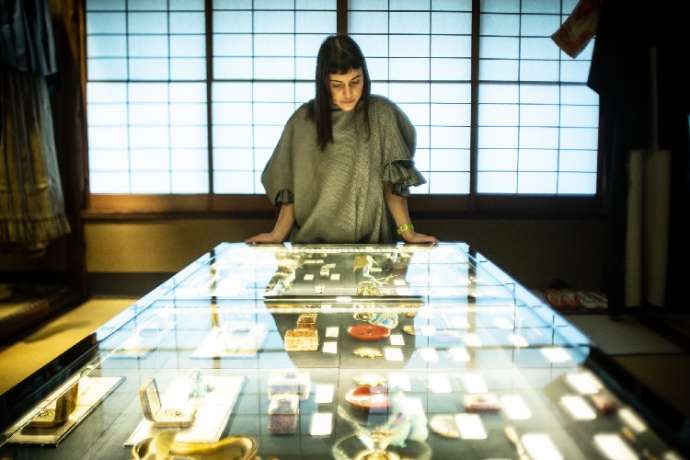
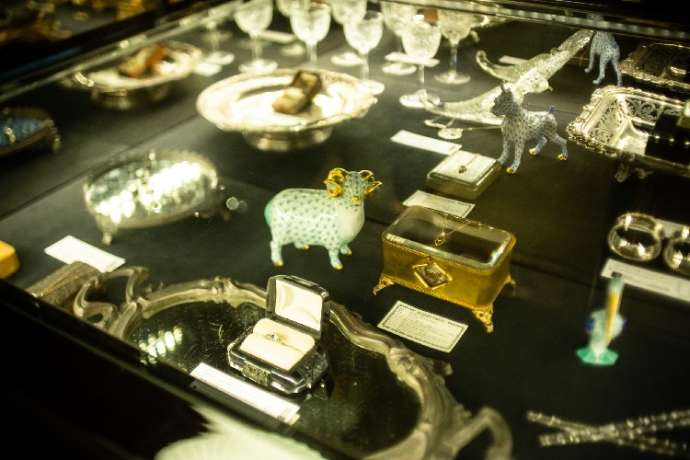
The second floor has items such as clothing and jewelry for sale. The high quality kimonos are also emblematic of Kyoto.
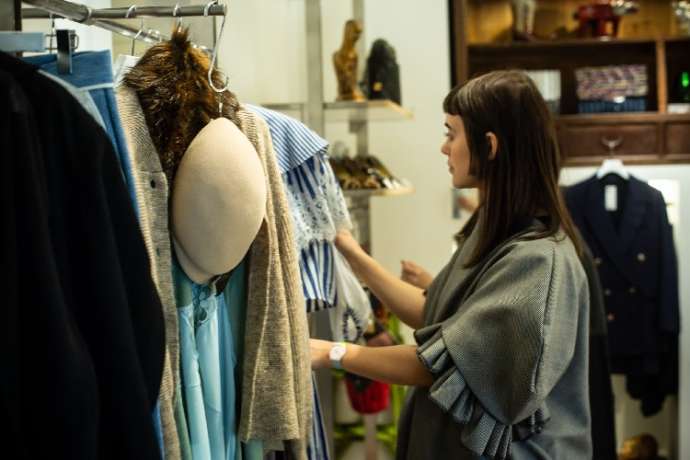
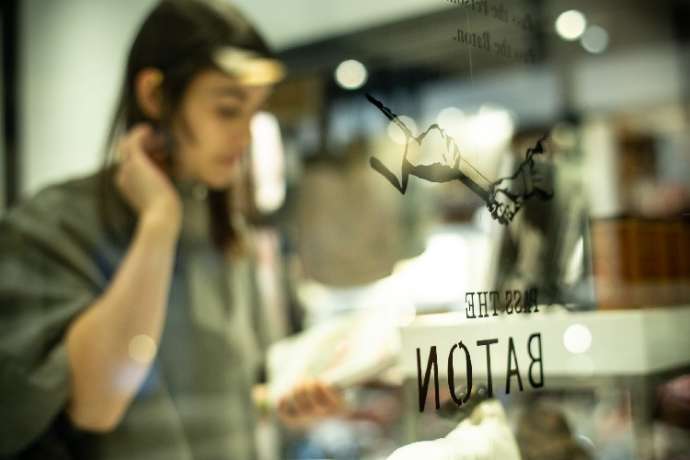
Leta: Even in these modern times it’s great to see people trying not to be so wasteful. The Japanese mentality — with kintsugi and other efforts to recycle old things — it’s really wonderful. For a second hand shop to be so stylish, this place really deserves respect.
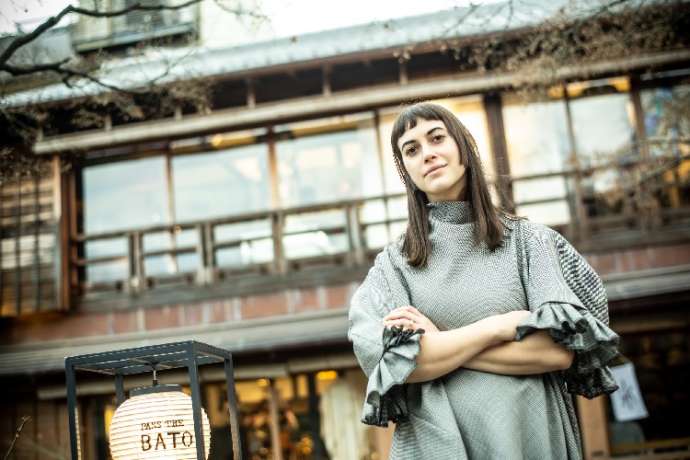
|
PASS THE BATON KYOTO GION |
|
Address: 77-6 Sueyoshichō, Higashiyama-ku, Kyōto-shi Hours: Mon-Sat 11:00-20:00 / Sun, holiday 11:00-19:00 Regular Holiday: N/A Phone Number: 075-708-3668 |
The truth is that this is Leta’s eighth visit to Japan. However, she suggests that she has never experienced it as deeply as she did this time. Leta: Even within Japan, Kyoto is known for its rich and deep history. I can’t help but respect the craftsmanship that has gone into the temples, architecture, and all of the other hand-made things here. Even the modern shops pay homage to that tradition. Kyoto is always so stimulating.
